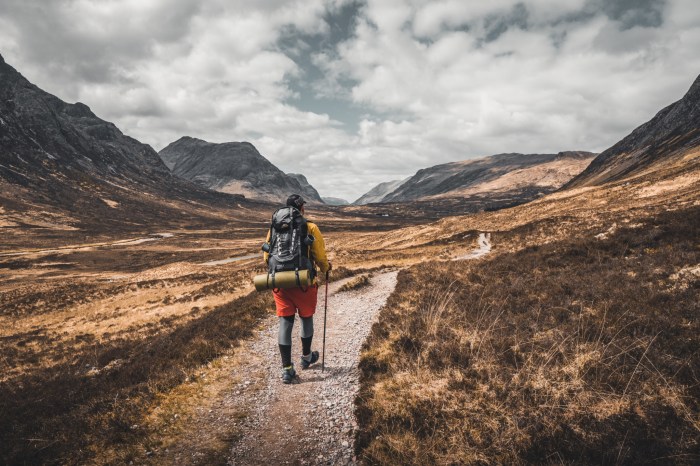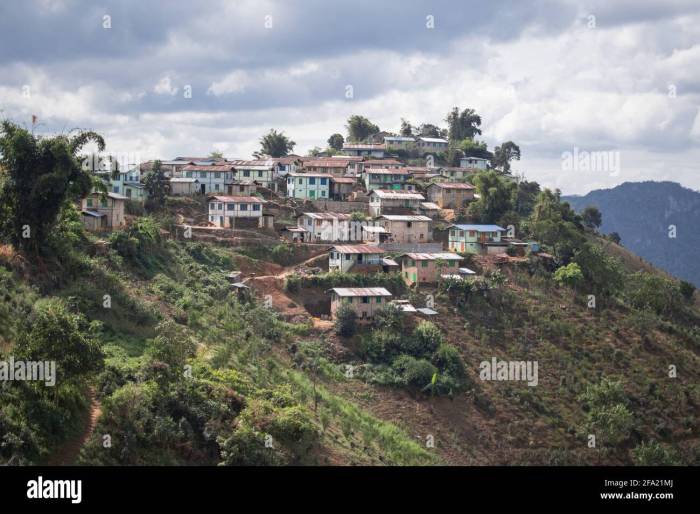While hiking you see a fragment of rock drop vertically, an awe-inspiring sight that prompts curiosity and contemplation. This occurrence unveils the dynamic interplay between geological forces and the landscape we traverse. As we delve into the geological formations, weathering processes, and rockfall dynamics that shape this phenomenon, we gain insights into the intricate workings of our planet’s surface.
The geological formations in the area where the rock fragment fell are a testament to the Earth’s dynamic history. The types of rocks found in the area, their characteristics, and the geological map provide a foundation for understanding the geological context of the rockfall.
Weathering and erosion processes, influenced by factors such as temperature, moisture, and wind, have sculpted the landscape and contributed to the rockfall event. Understanding the different types of rockfalls and their characteristics helps us appreciate the complexity of these events.
Geology of the Area

The area where the rock fragment fell is characterized by a complex geological history. The bedrock in the area is composed of sedimentary rocks, primarily limestone and sandstone, which were deposited during the Paleozoic era. These rocks have been uplifted and folded over time, creating a series of ridges and valleys.
The limestone in the area is particularly susceptible to weathering and erosion, which has created a karst landscape with sinkholes, caves, and underground rivers. The sandstone is more resistant to erosion, but it can still be weathered by temperature changes and moisture.
A geological map of the area is available from the United States Geological Survey (USGS). The map shows the distribution of different rock types in the area, as well as the locations of faults and other geological features.
Weathering and Erosion Processes

The rock fragment that fell may have been dislodged by a variety of weathering and erosion processes. These processes include:
- Temperature changes:When the temperature of the rock changes, it can cause the rock to expand and contract. This can create cracks in the rock, which can eventually lead to the rock breaking apart.
- Moisture:Moisture can seep into the cracks in the rock and freeze. When the water freezes, it expands and can further widen the cracks. This can eventually cause the rock to break apart.
- Wind:Wind can erode the surface of the rock, which can weaken the rock and make it more susceptible to other weathering and erosion processes.
Other rock formations in the area have been affected by weathering and erosion. For example, the nearby cliffs have been weathered by wind and rain, which has created a series of caves and overhangs.
Rockfall Dynamics

Rockfalls are caused by a variety of factors, including:
- Slope angle:The steeper the slope, the more likely it is that a rockfall will occur.
- Rock type:Some types of rock are more susceptible to weathering and erosion than others. For example, limestone is more susceptible to weathering and erosion than granite.
- Vegetation cover:Vegetation can help to stabilize slopes and prevent rockfalls. However, if the vegetation is removed, the slope may become more susceptible to rockfalls.
There are different types of rockfalls, including:
- Block falls:These are large blocks of rock that fall from a cliff or slope.
- Slab falls:These are thin slabs of rock that fall from a cliff or slope.
- Debris flows:These are mixtures of rock, soil, and water that flow down a slope.
Potential Hazards
Rockfalls can pose a significant hazard to hikers and other visitors to the area. The following are some of the potential hazards associated with rockfalls:
- Injury or death:Rockfalls can cause serious injuries or death to people who are struck by the falling rocks.
- Property damage:Rockfalls can damage buildings, cars, and other property.
- Road closures:Rockfalls can block roads, which can disrupt traffic and commerce.
Hikers and other visitors to the area should be aware of the potential hazards associated with rockfalls and take precautions to avoid being injured or killed by a rockfall.
Historical Rockfall Events
There have been a number of historical rockfall events in the area. The most recent event occurred in 2018, when a large block of rock fell from a cliff and killed a hiker. Other historical rockfall events in the area include:
- 1998:A rockfall blocked a road in the area for several days.
- 1975:A rockfall damaged a building in the area.
- 1950:A rockfall killed a hiker in the area.
These historical rockfall events demonstrate the potential hazards associated with rockfalls in the area.
Management and Mitigation Strategies: While Hiking You See A Fragment Of Rock Drop Vertically

There are a number of management and mitigation strategies that are in place to reduce the risk of rockfalls in the area. These strategies include:
- Slope stabilization:Slope stabilization measures can be used to stabilize slopes and prevent rockfalls. These measures include installing rock bolts, building retaining walls, and planting vegetation.
- Rockfall fences:Rockfall fences can be used to catch falling rocks and prevent them from hitting people or property.
- Warning signs:Warning signs can be placed in areas where there is a risk of rockfalls. These signs can warn hikers and other visitors to the area about the potential hazards.
These management and mitigation strategies are effective in reducing the risk of rockfalls in the area. However, it is important to note that there is no way to completely eliminate the risk of rockfalls.
Clarifying Questions
What factors influence the occurrence of rockfalls?
Factors such as slope angle, rock type, vegetation cover, and weathering processes all play a role in influencing the occurrence of rockfalls.
What are the potential hazards associated with rockfalls?
Rockfalls can pose significant hazards to hikers and visitors, including injury or even death from falling rocks or debris.
How can rockfall hazards be mitigated?
Mitigation strategies include trail closures, warning signs, rockfall barriers, and vegetation management to reduce the risk of rockfalls and protect hikers.